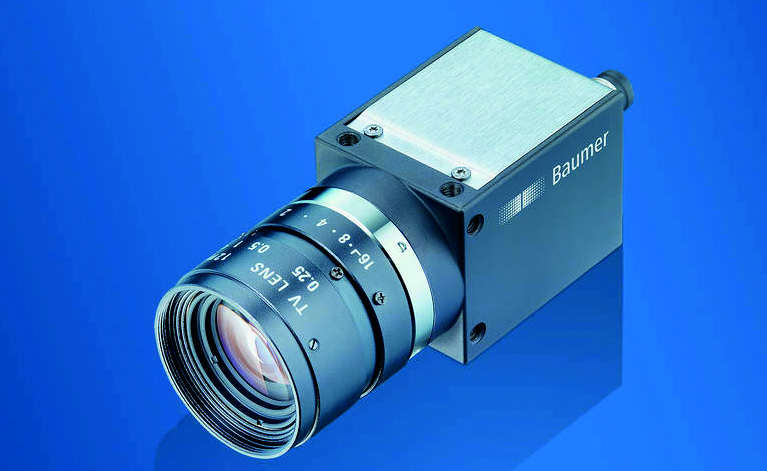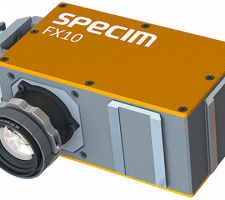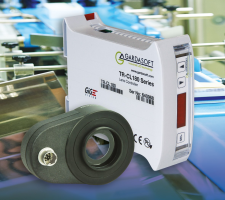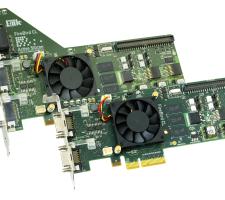
The Vision Show is the perfect venue to catch up with the latest moves, trends and launches in the traffic vision sector, and ITS International editor Colin Sowman highlights a few to start with…
Visitors to the
That said, vision-based transport-related applications remain a special case due to their particular demands of variable lighting conditions, fast-moving objects and exposure to the elements and vibration. Therefore not all cameras or systems are suitable for ITS applications and exhibitors with suitable products are displaying the Traffic Vision logo. Even with the field narrowed to equipment suitable for ITS applications, selecting the camera and systems best suited to a particular application can be difficult because there is often no read-across between different manufacturers’ specification sheets.
Realising this was a major impediment to end users selecting the most suitable equipment, the European Machine Vision Association (EMVA) initiated the EMVA 1288 standard which makes it easier to compare the cameras and image sensors of different vendors. This standard has been adopted worldwide and provides the basis for an objective characterisation of cameras and sensors by physical parameters.
It centres on the camera (without a lens) and introduces objective criteria for the rating of sensitivity, noise, spectral sensitivity, dark current, homogeneities and defective pixels and includes both area and line cameras with monochrome or colour sensors. In addition, one of the exhibitors, camera producer Allied Vison, has introduced its own series of videos to highlight some of the key questions that need to be asked before selecting a machine vision camera. It is displaying plenty of examples of vision hardware for visitors to view along with some interesting and varied case studies.
CAMERAS
Canadian camera manufacturer
If that still doesn’t provide the necessary performance, Point Grey will also introduce its highest resolution camera to date, the 20 megapixel Blackfly S with Sony’s Exmor R IMX183 1” CMOS sensor. The sensor’s backilluminated architecture is said to increase efficiency and reduce read noise for improved sensitivity and dynamic range and is mounted in the 29 x 29 x 30mm Blackfly S camera housing. Other new products include 3D vision stereo technology and the company’s latest 360-deg spherical vision camera. Also upping the resolution is
The compact (29 x 29mm) camera body has a USB 3.0 interface and the combination of high resolution and speed with low dark noise and high (71dB) dynamic range makes the CX cameras well suited to traffic monitoring applications.
The plug & play USB cameras need only a single cable for high data transmission rates and can endure housing temperature up to 65°C while the integrated temperature sensor monitors the current operating temperature.
Another of the industry’s big names,
Additions to its diminutive Go Series industrial CMOS cameras will be highlighted on Jai’s stand along with two new Sweep Series monochrome line scan units but as Traffic Vision went to press, the company hadn’t indicated what transport-related cameras and technology will be highlighted at the Vision Show.
Keeping pace with a race car must be one of the more appropriate tests for a traffic camera and one that Imaging Development Systems (
Resolution and high shutter speeds are also a big factor for
SPAD (Single-Photon Avalanche Diodes) sensors used in applications like LiDAR for automotive, 3D-ranging, fluorescence lifetime imaging and surveillance, form the centrepiece of Fraunhofer’s display. The devices, which use 0.35μm CMOS technology, are said to offer a low dark count rate, high time resolution and a broad spectral range versatility which suits applications that rely on highly sensitive optical sensors. Light sensitivity down to singlephoton levels is said to be possible.
Onboard technology is also a key theme for Pleora which is attracting increasing interest in its video interface products from the automotive sector - primarily for ADAS (advanced driver assistance systems) applications. The company’s products are already used in toll monitoring and railway inspection and the enquiries from ADAS designers concern Ethernet interfaces for driver assistance, primarily for cabling and networking abilities, low latency and uncompressed video delivery.
Austria’s Institute of Technology will be at the Vision Show exhibiting advanced camera technology and self-learning IT systems. It has developed a sensing system that enables vehicles to capture their environment in 3D in real time for reliable and driver-independent navigation to improve road safety by supporting the driver it will ultimately enable the realisation of fully autonomous vehicles on the road, railways and aircraft as well as in construction and agricultural industries. The company is working with
For authorities unable to justify changing their old IP cameras for smart cameras,
LIGHTING & PROCESSING
Vision Components is also introducing the VC Flash infrared lighting module which operates with a central wavelength of 850nm and has been developed specifically for traffic surveillance applications. With 24 high power LEDs, the module illuminates an area of 7.5m by 5m at a distance of 20m for mobile and stationary ANPR/ALPR applications, red light enforcement, access control and toll collection. Peak power is 36W and a trigger regulates pulse duration between 10-500μs and several VC Flash modules can be connected together to achieve even higher levels of illumination.
The VC Flash infrared forms part of the company’s modular ITS solution for traffic control which also comprises the Carrida Software Engine, Carrida Cam and the Q-Board detailed above. It says the solution is suitable for applications such as access control, toll and speed control, traffic analysis or fleet management.
Another innovation in the lighting sector is Gardasoft’s Triniti intelligent lighting platform which will be demonstrated at the show along with the new TR-CL series of single channel industrial lens controllers.
Triniti automatically compensates for changes in light intensity by using the camera to continually measure the illumination of a defined part of the scene. This reading is then compared with a predetermined illumination bandwidth and the lighting controller output automatically adjusts in real time to maintain the LED intensity within the bandwidth. Active Silicon’s focus is on isolating images of errant drivers and in introducing the FireBird camera link Deca Low Profile range of CoaXPress and camera link frame grabbers. The new board meets the 2.0 Camera Link specification (both 8 bit 10-tap and 10 bit 8-tap modes) at clock rates up to 85MHz and can sustain throughputs of up to 1.7Gbytes/s. It is said to be applicable for virtually any machine vision application.
Another new CoaXPress board, this time from
***************************
HYPERSPECTRAL
An emerging technology which could have, as yet untapped, applications in the transport sector is hyperspectral imaging. An example of this technology can be seen in the
Hyperspectral imaging differs from normal visible, UV or IR image processing by using hundreds different wavelengths (between 400 and 1,000nm) and using a spectrograph to split light of many different wavelengths into its spectrum. This spectrum is then captured by the camera’s sensors and allows an analysis of the inspected objects. If all 220wavelengths are captured then the FX10’s maximum capture speed is around 330fps. If only 20 wavelengths are captured the frame rate rises to 2,830 fps and can reach 6510fps if 5 wavelengths are selected in 3 different ranges.
Stemmer is also working with Austrian company Perception Park and has developed a solution for hyperspectral imaging in the short-wave infrared range (900 to 1,700nm).
******************
UNDERGROUND
London Underground is now using visual monitoring of the wheel/rail interface and the track through the use of 104 industrial cameras mounted directly onto the trains thanks to some packaging work by Stemmer Imaging. Stemmer developed the bespoke enclosures to house a 120fps
The enclosures are electrically solated and IP65 certified while the sub-assemblies are shock rated to 5G for continuous load (shaking) and 50G for drop.
Two trains on each line are instrumented with two cameras: one mounted on the bogey to provide information on the wheel-rail interface and the second fitted at the end of the carriage to provide a 4’ view of the running and conductor rails. Spatial triggering provides images at set distances apart and the high speed (40μs) pulsed illumination freezes the relative movement between the train-mounted cameras and the track. IR illumination was chosen to avoid interference from ambient light (part of the rail network is above ground) and in order that the rapidly pulsed IR illumination does not cause problems for people suffering from epilepsy or photosensitivity.
Image data is collected during normal working hours and uploaded by Wi-Fi for analysis at night using data recording and image processing methods developed by London Underground. This maximised the time available during the 4-hour night closure period to maintain the network’s 1,000km of track.
**********************
HOT TOPICS
One of the biggest talking points at Vision will be the recent takeover of two of the big names in the sector: Point Grey Research and
Last month, US-headquartered thermal imaging specialists
In May the UK-based lighting specialist Gardasoft Vision announced it was to become a wholly-owned subsidiary of the Japanese sensing technology specialists








